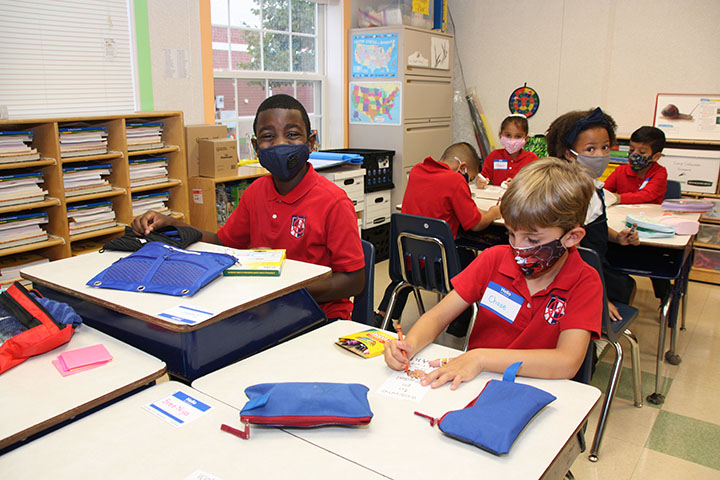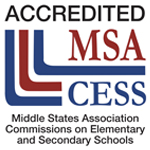

In the face of the ongoing pandemic, and with variant strains on the rise, vaccination and sanitization alone may not be enough to mitigate the continuing spread of COVID-19. In order to further take measures to avoid the chance of infection in school we have mandated, in accordance with state health guidelines, the wearing of masks for all students and staff while inside the buildings of CHP’s campus.
The CDC’s recommendation is for all people 2 years of age and older to wear a face mask to slow the rate at which COVID-19 can travel from person to person. As the tide of misinformation from disreputable sources also rises, we offer the following information in an attempt to counter the dangerous myths that have taken root alongside this pandemic.
4 Common Myths:
1. Myth: I’m not sick so I don’t need to wear a mask.
Many people with COVID-19 may be asymptomatic, but this does not mean that they aren’t still carriers of the virus. In effect, these people do not know they are sick and are likely transmitting COVID-19 through simple actions like coughing, sneezing, shouting, or singing. A mask limits the respiratory droplets that may be passed along to another person. This helps protect both the wearer and those around them and takes the guesswork out of knowing whether or not you are sick without symptoms.
2. Myth: Wearing a cloth mask does not protect you from getting COVID-19.
Common sense dictates that any form of protection is better than none at all. The virus adheres to the rules of science, and the simple logic is that a reduction in the amount of droplets released from a person’s respiratory system leads to a reduction in risk. While a cloth mask may potentially be less effective than a surgical mask, it is still a vast improvement over no facial protection at all. Again the mask offers as much security and protection for others as for yourself.
3. Myth: Wearing a mask will increase the amount of carbon dioxide I breathe and will make me sick.
Every day, long before this current pandemic, health care providers from dentists to surgeons, have worn masks at length for extended periods of time without any adverse impact on their health. The cloth masks recommended by the CDC are breathable enough to diffuse all carbon dioxide through the mask and do not cause a risk of hypoxia, a decreased level of oxygen. Breathing through your nose as much as possible can also cut back on humidity and improve the comfort of the mask when wearing one.
4. Myth: If I’m wearing a mask, I don’t need to practice social distancing.
The mask is only one of several preventive actions. While it is certainly the first line of defense, it is not the only or the last measure that can be taken to curtail the spread of the virus.
Recommended behaviors to practice in addition to mask wearing include:
- Maintaining a physical distance of 6 feet.
- Limiting in-person meetings whenever virtual is an option.
- Wash your hands with soap frequently and vigorously.
- Stay home when not feeling well, especially if you are running any kind of fever.
- If you feel symptomatic, schedule a COVID-19 test with your local health care provider. Most pharmacies offer either at home or on site rapid result tests.
- Be sure to isolate yourself if you have been exposed to someone who is sick or tested positive.
Thank you for reading. Please take the time and consideration to make careful, informed decisions around the pandemic and your family’s safety. We are all in this together and hope to see the friendly faces under the masks as soon as we are able.





